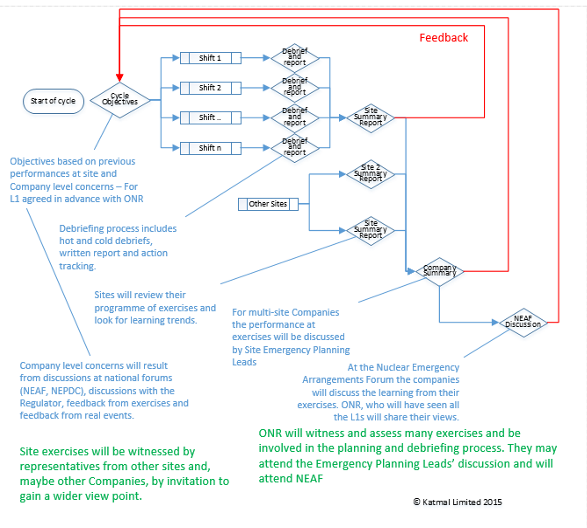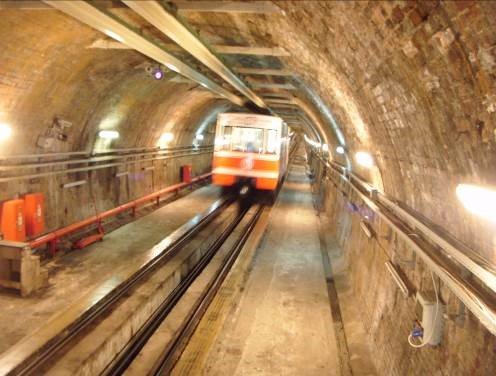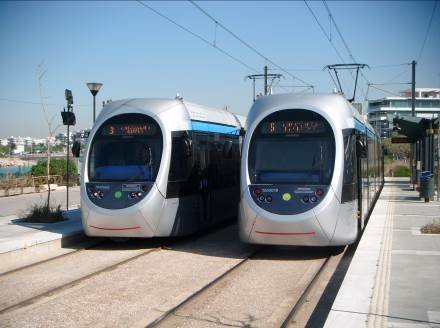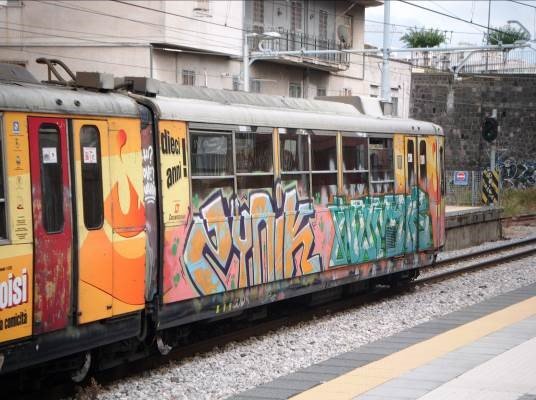The Testing of Emergency Arrangements
The nuclear emergency arrangements in the UK are constantly being tested and an attempt is made to test every component of the plans over a limited period of time.
There are four main classes of formal exercise:
- Level 1 exercise - Test of on-site arrangements
- Level 2 exercise - Test of off-site arrangements
- Level 3 exercise - major test of national arrangements
- Security - A test of the site's security arrangements
These are described in more detail below.
A list of the emergency execises for the next year can generally be found on the ONR website
(here).
There are a number of reasons for holding emergency exercises but the two main ones are:
Training Exercises which are held to train people in their roles and give them practice.
Demonstration Exercises which are held to prove that the plan works and to identify areas where it needs to do better.
It is generally unwise to mix these two reasons in one exercise but it does often happen in the big multiagency exercises where some agencies are
fielding a strong team to "prove" the plan and others are fielding trainees to give them experience of the arrangements. Often of more concern is when participants
turn up with no knowledge of the plan at all.
Level 1 exercises - Test of on-site arrangements
Site Licence Condition 11 clause 5 requires that:
5 The licensee shall ensure that such arrangements are rehearsed
at such intervals and at such times and to such extent as ONR
may specify or, where ONR has not so specified, as the licensee
considers necessary. In practive this generally means that there will be an annual Level 1 exercise, sometimes called 'the annual demonstration
exercise', witnessed and judged by the regulators. If they are unimpressed with what they see they can demand steps ranging from some additional training, a partial
or complete redemonstration after remedial training has been completed or, in extremis, a halt on any radiologically significant work on site until remedial steps
have been taken and a redemonstration deemed adequate. (For reasons that are lost in the mist of time the ONR limit themselves to the term "that was an adequate demonstration"
to express satisfaction in an exercise. It often seems a poor response when the exercise has gone really well!)
Level 1 exercises are based on a scenario agreed between the site and the regulators some time before the day. These scenarios tend to be on the upper end of
"reasonably foreseeable" and generally have a number of different things going on to better test the responders and the command and control systems. This is based
on the perceived wisdom from the military Train hard. Fight easy but does run the risk of training responders to assume that events are more complicated than they seem.
For operating gas cooled reactor sites the Level 1 exercises will often be based on a reactor fault, often including unplanned depressurisation and often included members of staff
being unaccounted for and/or injured. Reactor faults are popular for these exercises as they usually require the knowledge and skills of several groups of people to be pooled to understand
the event, determine how to fix it and then make that fix work. There is also an element of working against the clock.
For decommissioning sites the scenarios are generally more
limited in potential severity but can be wider ranging and more inventive in terms of initiating events.
Level 1 exercises generally involve the participation of:
- The Shift Leader and their team of personnel
- Damage Assessment and Damage Repair Teams who go forward to assess and recover the situation
- Access Control Point personnel who provide Command and Control, Contamination Control, Briefing and equiping of responders and monitoring/decontamination and debriefing of returnees
- The Duty Emergency Controller and the Emergency Control Centre and personnel
- Emergency First Aid teams
- A range of supporting technical experts to assess the situation and suggest options for recovery
- Support personnel to support and manage the response
- All others on site who will often muster for the full duration of the exercise
Level 1 execises can last the whole day but are generally of shorter duration to allow briefing and debriefing adequate time.
The ONR view of Level 1 exercises can be gauged from Sections 6.5 - 6.13 and Appendix 2 of
Nuclear Safety Technical Inspection Guide, NS-INSP-GD-011 Revision 3
Back to top of section |
Back to top of this exercise class |
Level 2 exercises - Test of off-site arrangements
Level 2 exercises are undertaken to test the off-site plan. Although they pre-date the REPPIR regulations they are now seen to exist to satisfy
the requirement in
REPPIR Regulation 10 which states that
(1) The operator, carrier or local authority who has prepared (or, in relation to
a carrier, has ensured that there has been prepared) an emergency plan pursuant
to regulation 7, 8 or 9, as the case may be, shall at suitable intervals not exceeding
3 years -
(a) review and where necessary revise the plan; and
(b) test the plan and take reasonable steps to arrange for the emergency
services to participate in the test to such extent as is necessary, ...
When a decommissioning site is agreed to have dropped below the REPPIR threshold of risk the need to maintain and test and off-site plan is removed.
Level 2 exercises tend to be at the upper end of the "reasonably foreseeable" scale for the site to fully test the response.
Guidance on the planning, execution and
debriefing of Level 2 exercises can be found in the
NEPLG Consolidated Guidance Chapter 5. This guidance states (para 5.3.1) that"The primary aim is to ensure that for each licensed site there is a test of the off site
plan at least every three years. As a minimum every 6 years a full exercise should
be undertaken with the potential for modular exercises to be undertaken between
these dates. Periodically the test should include the implementation of emergency
arrangements beyond the DEPZ".
Section 5.4 of the Guidance discusses the role of the Local Authority and, in particular, the role of the Exercise Director in convening, chairing and recording a series of
planning meetings aimed at obtaining agreement about the aims, scope, nature and participation of or in the exercise.
The following "key activities" are identified in paragraph 5.5.5 as generally being a required part of the exercise.
a) Notification
b) Set up of SCC
c) Supply of information to the SCC
d) Interpretation of information at the SCC
e) Interfaces and exchanges/teamworking
f) Strategic decision making at the SCC
g) Communications and Public Information
h) Facilities and equipment
i) Competence of participants.
Quite often there is no play on the actual site other than a team of people reading from a script to drive the Company's technical and communications
response and the Strategic Coordination Centre. There are a large number of people involved in a number of facilites across the UK.
Back to top of section |
Back to top of this exercise class |
Level 3 exercises - Test of national arrangements
From the annual programme of local off-site exercises for licensed nuclear sites one
is chosen as a national exercise to rehearse not only the functioning of the SCC but
also the wider involvement of central government, including the exercising of the
various government departments and agencies attending DECC’s Nuclear
Emergency Briefing Room (England and Wales) in London or the Scottish
Government Resilience Room in Edinburgh. The decision on which exercise should
be selected as the national exercise is made jointly between the licensees, the lead
government departments (DECC/Scottish Government), the relevant local authority,
and in consultation with the ONR. MOD exercises may be used to test the
extendibility of the off-site plans as part of the UK national response arrangements.
In Wales the Welsh Government’s Emergency Co-ordination Centre has
responsibility for the consequence management and recovery phases of any
exercise.
Back to top of section |
Back to top of this exercise class |
Security Exercises
Security exercises are undertaken to assess the site's ability to respond to malicious events. The potential events are defined in restricted national documents and
include such things as improvised explosives, missiles, sabotage and incursion.
Back to top of section |
Back to top of this exercise class |
The Planning of Exercises
Like many things in life, emergency exercises tend to go better and to be more useful when they are carefully planned. There are many things that should be agreed in the planning stages such as:
- Objectives
- Scope
- Umpiring
- Debriefing
Exercises are often planned in cycles with the extraction of the lessons learned and action tracking from one exercise being used to inform the objectives and
scenario of the next exercise. Feedback cycles exist on the site, at Company level (for multi-site Companies), and nationally with bodies considering the learning
from on-site execises (NEAF) and off-site exercises (NEPDC, was NEPLG).
 .
.It is important to agree the objectives of an exercise early in the planning stage. These objectives may be to achieve some training needs, to test some new
equipment or processes or to demonstrate to the site management or regulator that the arrangements can work. For comparison with other exercises and other sites, and
to ensure that the whole scheme gets tested over a cycle of exercises it is helpful to have a standard list of objectives from which a sub-set can be chosen for each
exercise.
Back to top |
Return to Content Index |
Next page |






